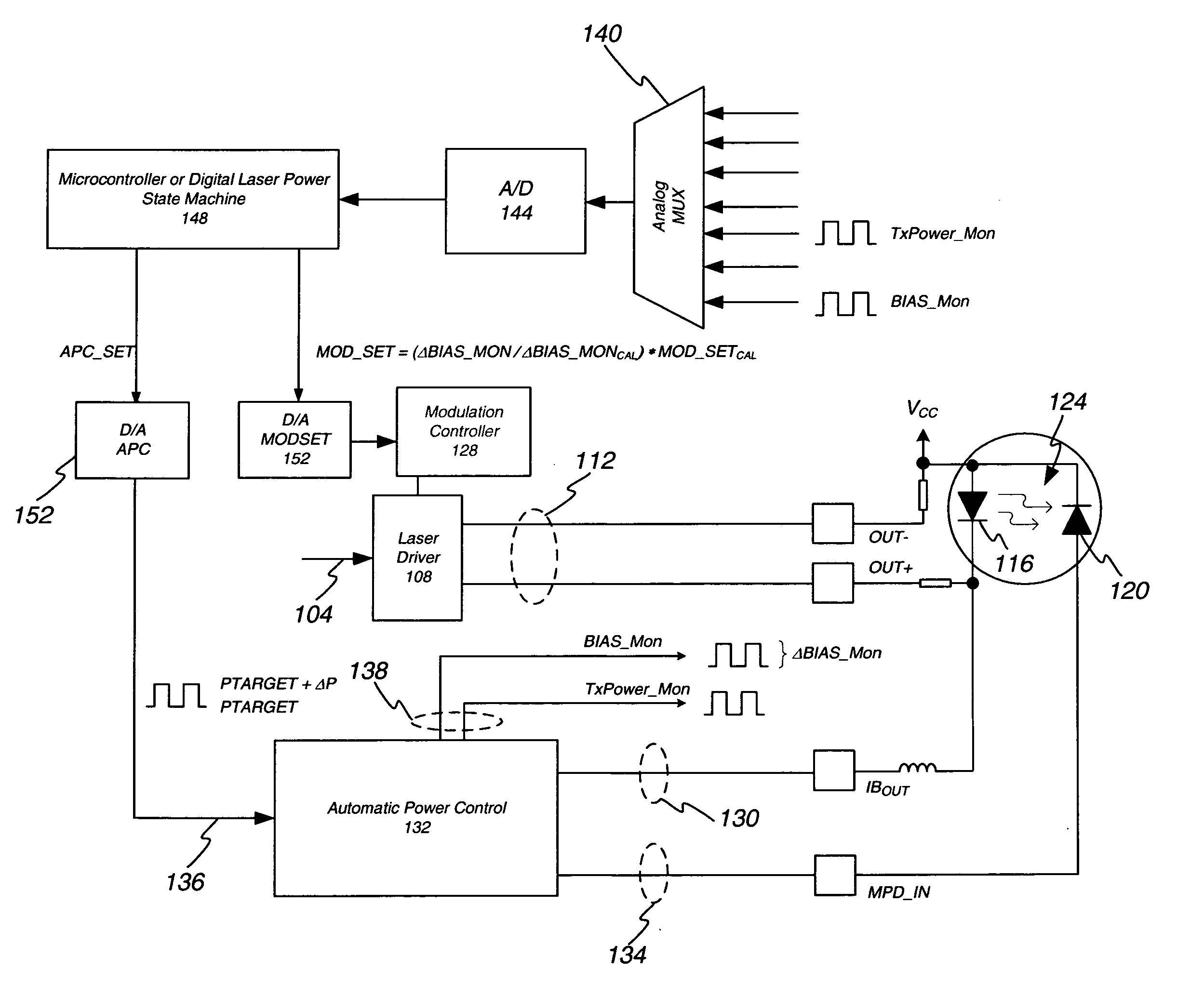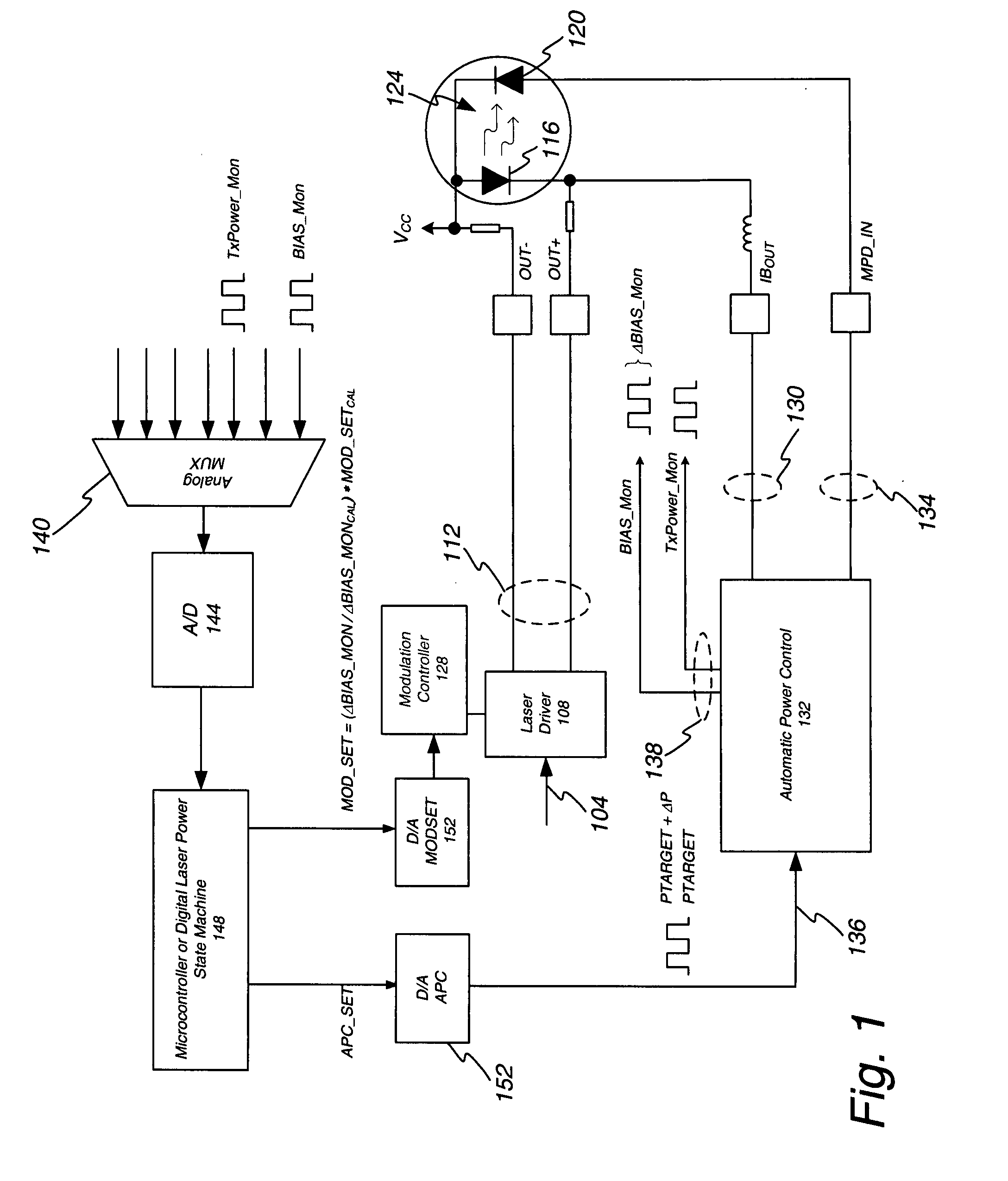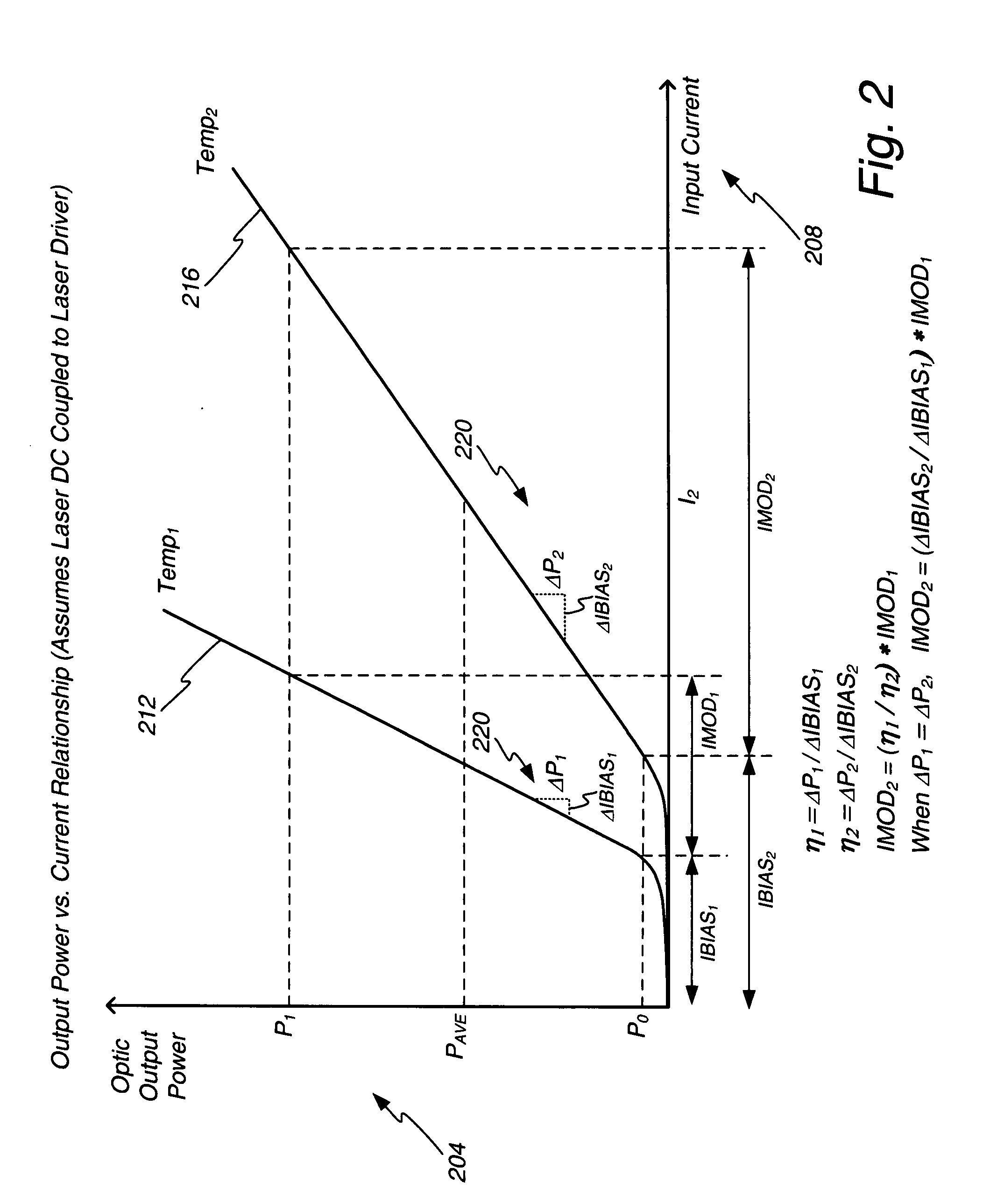Optical modulation amplitude compensation
a technology of optical modulation and amplitude compensation, applied in the field of optical communication systems, can solve problems such as non-linear behavior of lasers
- Summary
- Abstract
- Description
- Claims
- Application Information
AI Technical Summary
Benefits of technology
Problems solved by technology
Method used
Image
Examples
Embodiment Construction
[0025] In general, the innovation disclosed herein utilizes a normal average power control loop. In the system disclosed herein the target average power is adjusted by a small percentage, and the corresponding change in bias current needed to adjust the average power level is monitored. The change in average power divided by the change in bias current is a measure of the laser's slope efficiency. Modulation current is adjusted up or down based on the change in slope efficiency compared to the slope efficiency stored at the time of module calibration.
[0026] Numerous benefits result from the design set forth herein. For example, open loop solutions do not actively monitor or control the average power and optical modulation amplitude. They rely mainly on simple temperature compensation techniques or the use of look-up tables. Look-up tables can place additional burden on the manufacturing process, likely needing to be updated with each lot of lasers. In addition, look-up tables compen...
PUM
 Login to View More
Login to View More Abstract
Description
Claims
Application Information
 Login to View More
Login to View More - R&D
- Intellectual Property
- Life Sciences
- Materials
- Tech Scout
- Unparalleled Data Quality
- Higher Quality Content
- 60% Fewer Hallucinations
Browse by: Latest US Patents, China's latest patents, Technical Efficacy Thesaurus, Application Domain, Technology Topic, Popular Technical Reports.
© 2025 PatSnap. All rights reserved.Legal|Privacy policy|Modern Slavery Act Transparency Statement|Sitemap|About US| Contact US: help@patsnap.com



